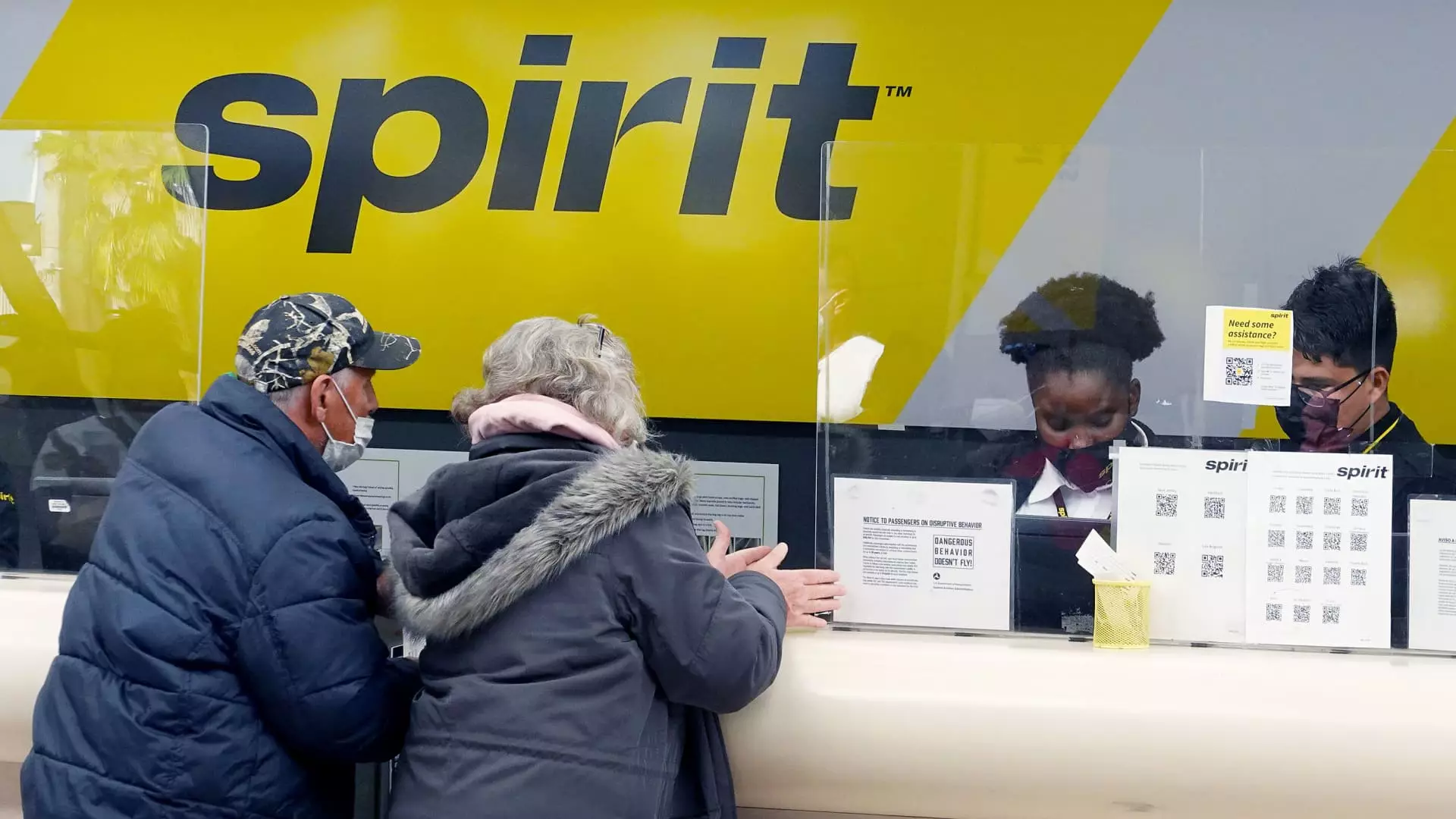Spirit Airlines, hailing from Dania Beach, Florida, has been a notable player in the budget air travel sector for over a decade. Known for its unconventional business model that thrives on offering minimal fares accompanied by a plethora of extra fees, Spirit disrupted traditional airline pricing strategies. It filled a prominent gap in the market, catering to travelers seeking inexpensive options without the frills associated with legacy airlines. This model not only attracted early adopters, but also influenced larger carriers like Delta and American Airlines to explore similar low-cost offerings. However, the once-rewarding approach now faces harsh reality checks, culminating in the airline’s recent filing for bankruptcy protection.
From Expansion to Distress
Despite achieving significant growth, Spirit Airlines found itself engulfed in an array of challenges that transformed its meteoric rise into a steep decline. As the pandemic struck, the aviation industry faced widespread turbulence. Spirit struggled notably with an engine recall that grounded key portions of its fleet and the subsequent financial impacts of rising operational costs. The airline’s attempts to enhance its market position through a merger with JetBlue Airways—their acquisition bid of $3.8 billion—was shelved after antitrust concerns were raised. Recent comparisons to its contemporaries during a tumultuous recovery phase painted a grim picture: while the broader industry abruptly rebounded, Spirit lagged, unable to compete effectively amidst heightened consumer expectations and fluctuating fare structures.
Early Monday, Spirit announced its decision to seek Chapter 11 bankruptcy protection, marking a critical juncture in its operational history. The move follows a year in which the airline’s stock plummeted by over 90%, and numerous failed attempts to renegotiate significant debts with credit card processors compounded its financial woes. With a prearranged deal with bondholders in place, Spirit secured $300 million in debtor-in-possession financing, claiming to weather the storm while planning to operate as usual during the busy holiday season. Yet, this newfound capital will not erase the underlying issues exacerbated by pandemic-related costs and an aggressive competitive landscape.
A Reflection on the Business Model
Spirit’s model, once heralded as a disruptive success with its ultra-low fares and additional fee structure, began to show cracks significantly post-pandemic. The historic withdrawal of consumers from traditional airlines for budget options was short-lived as travelers sought more than mere affordability; they yearned for comfort, convenience, and reliable service. In this shifting dynamic, Spirit’s bare-bones approach grew less appealing. To cope, the airline made attempts to adjust, introducing bundled fare structures and increased amenities to retain its customer base. Still, the ingrained public perception of Spirit as a “cheap” carrier remained, often relegated to humorous anecdotes and less favorable comparisons within the industry.
The path ahead for Spirit remains riddled with uncertainty and necessary recalibrations. With a substantial reduction in fleet size, including a recent sale of 23 Airbus aircraft for $519 million, the airline must find a balance between operational capability and financial sustainability. The decision to furlough pilots is another somber indicator of the upheaval Spirit faces, as ongoing adjustments are critical in steering the company back towards profitability.
While the desire to emerge from bankruptcy might be on Spirit’s horizon, analysts suggest that further contraction is inevitable. This could entail leaving behind many routes that have become unsustainable, which in turn may alienate the very customers that the carrier once courted enthusiastically. In a market that has become increasingly saturated with low-cost options, capturing consumer loyalty will require more than just slashing fares. Customers are looking for reliable service, reasonable pricing, and a better overall experience.
As Spirit Airlines navigates this challenging phase, the broader implications for the low-cost carrier sector become increasingly evident. The pandemic has redefined consumer travel preferences, and airlines need to adapt swiftly to survive. Analysis of Spirit’s situation underscores a necessity for agile responses amidst changing market dynamics. If Spirit is to reclaim its position, it must not only reinvent its service model but also address the evolving needs of a more discerning customer base.
In essence, while Spirit Airlines was once a front-runner in budget travel, its current trajectory serves as a cautionary tale. The shift towards a more competitive, experience-driven market landscape demands adaptability, innovation, and a renewed commitment to customer satisfaction—an endeavor Spirit must prioritize if it hopes to take to the skies once again successfully.


Leave a Reply